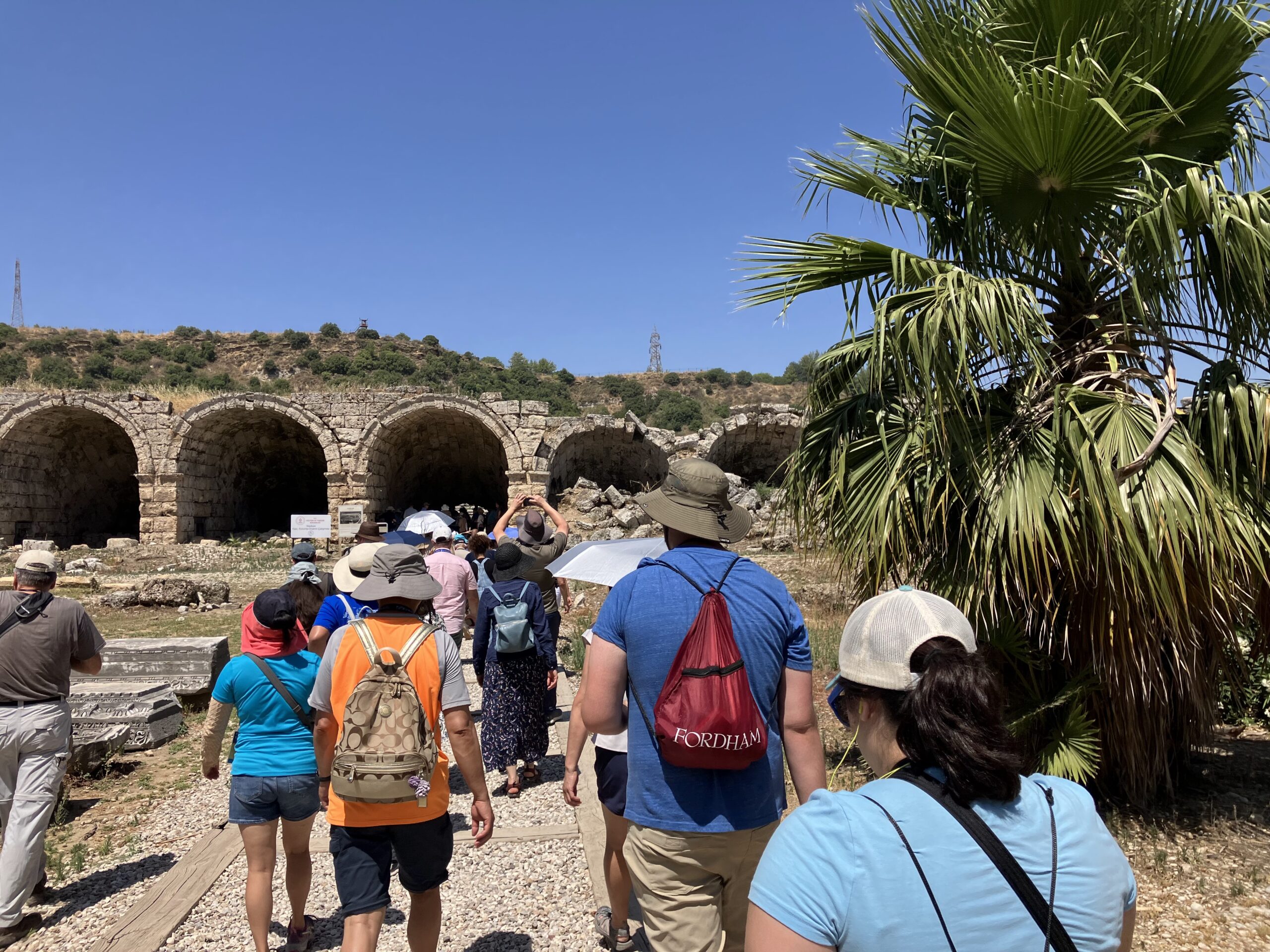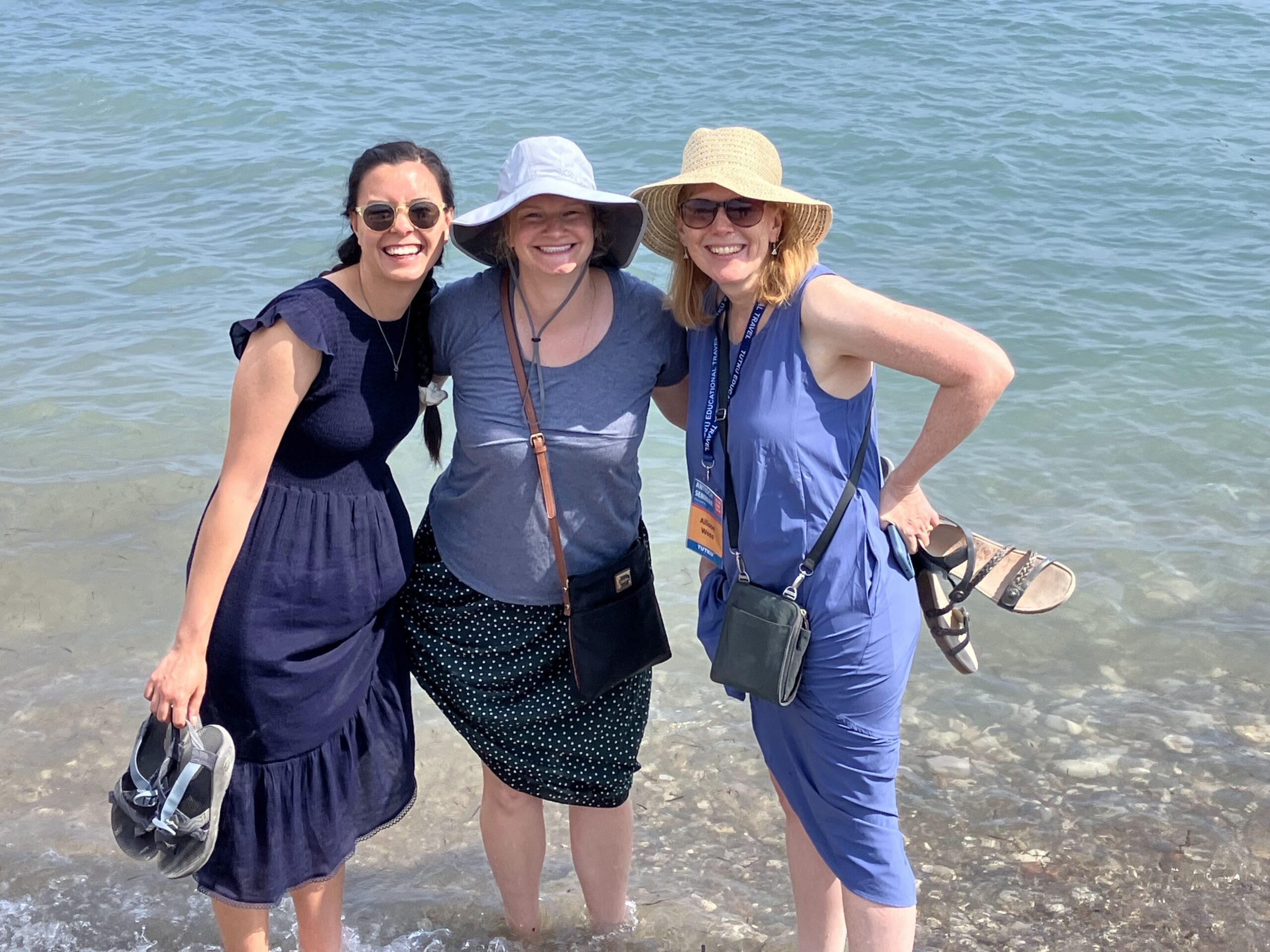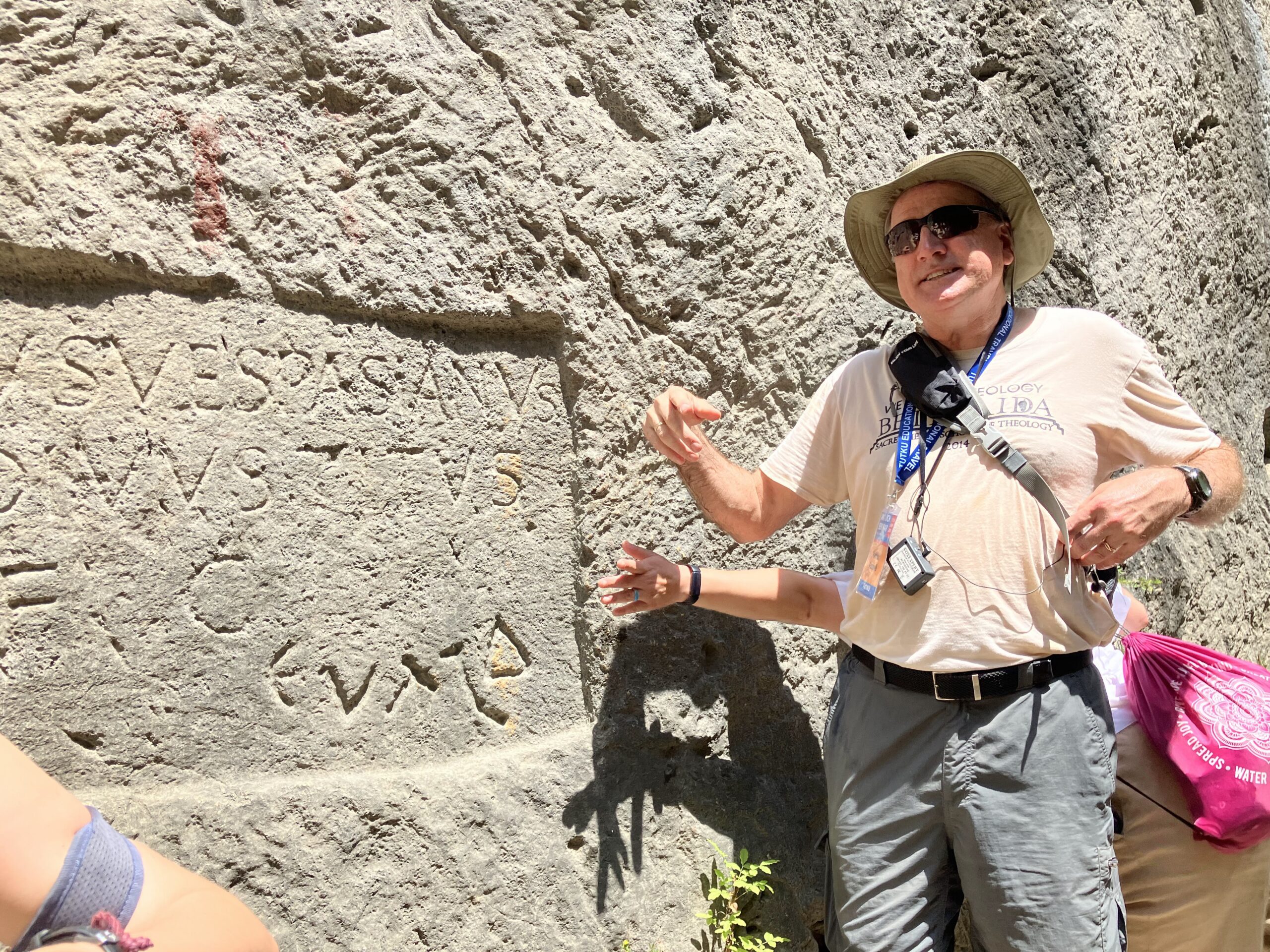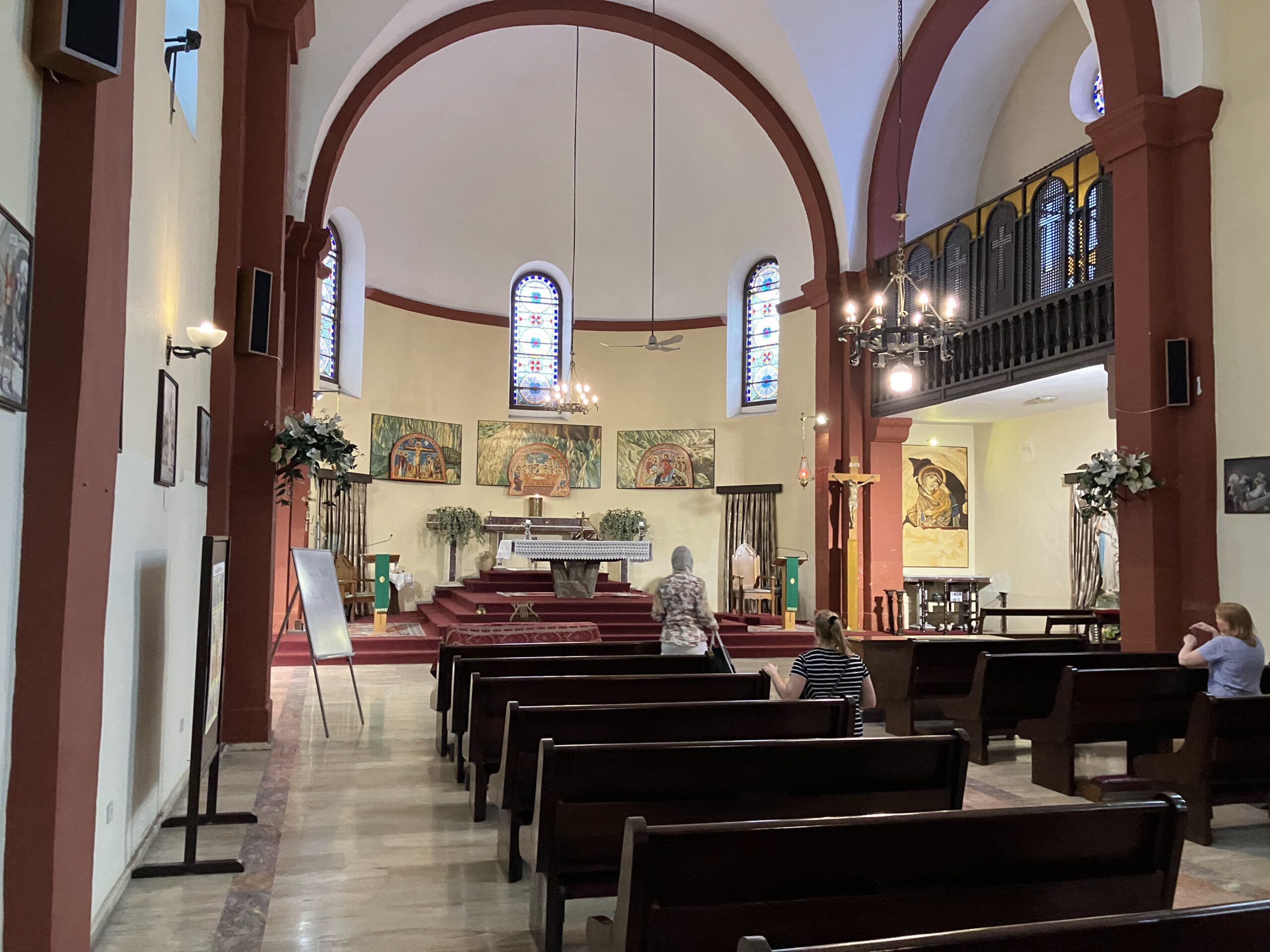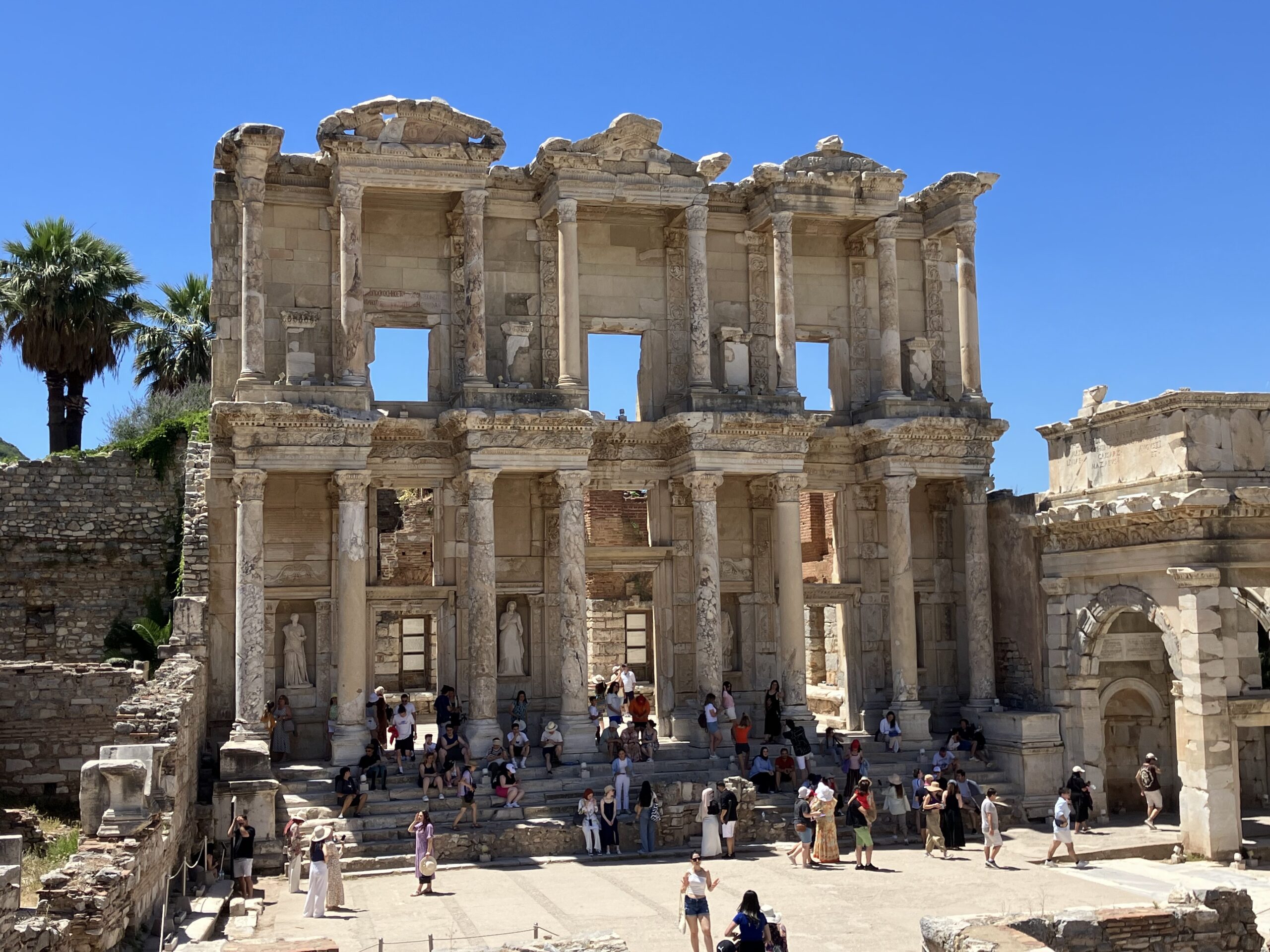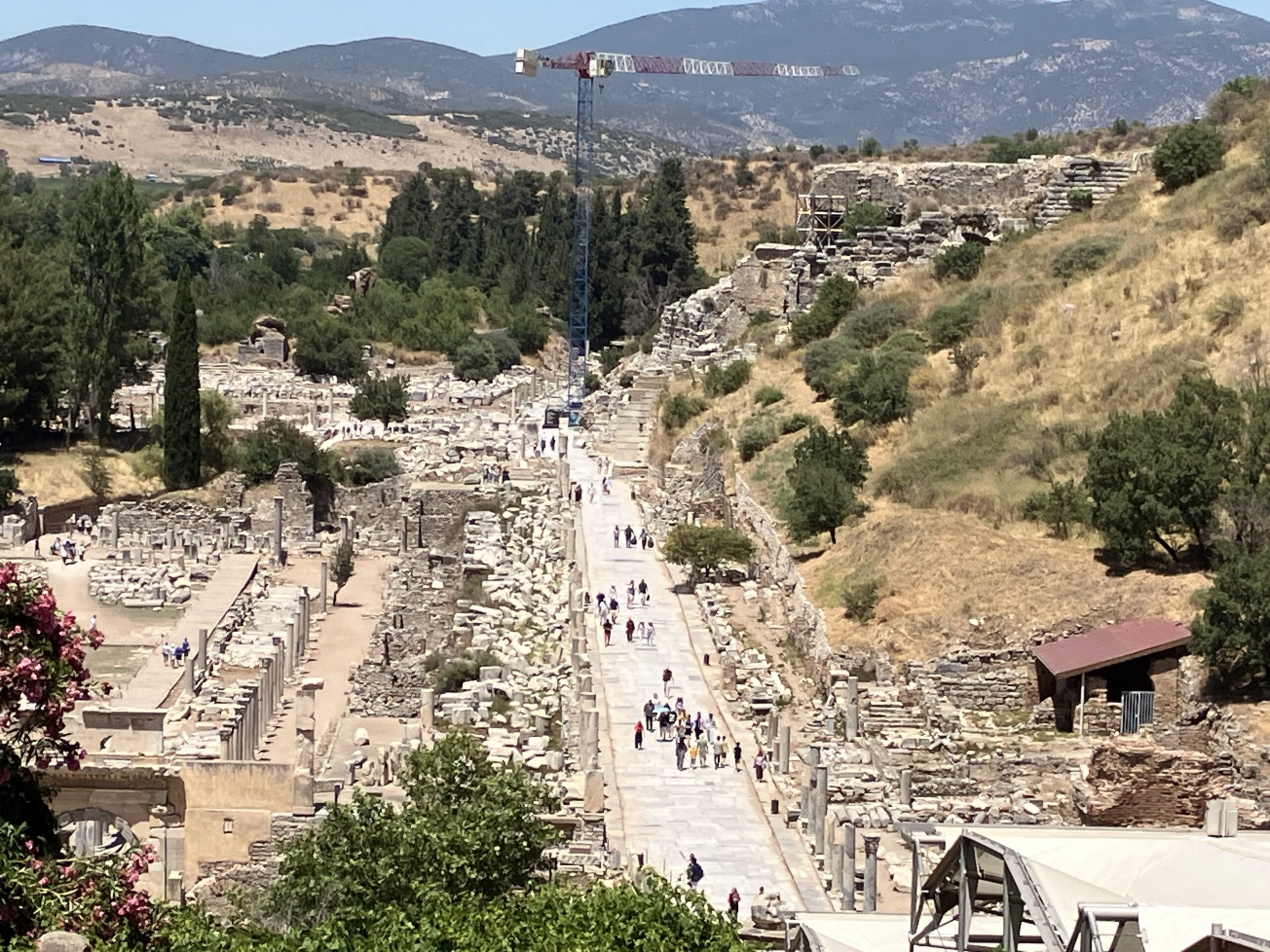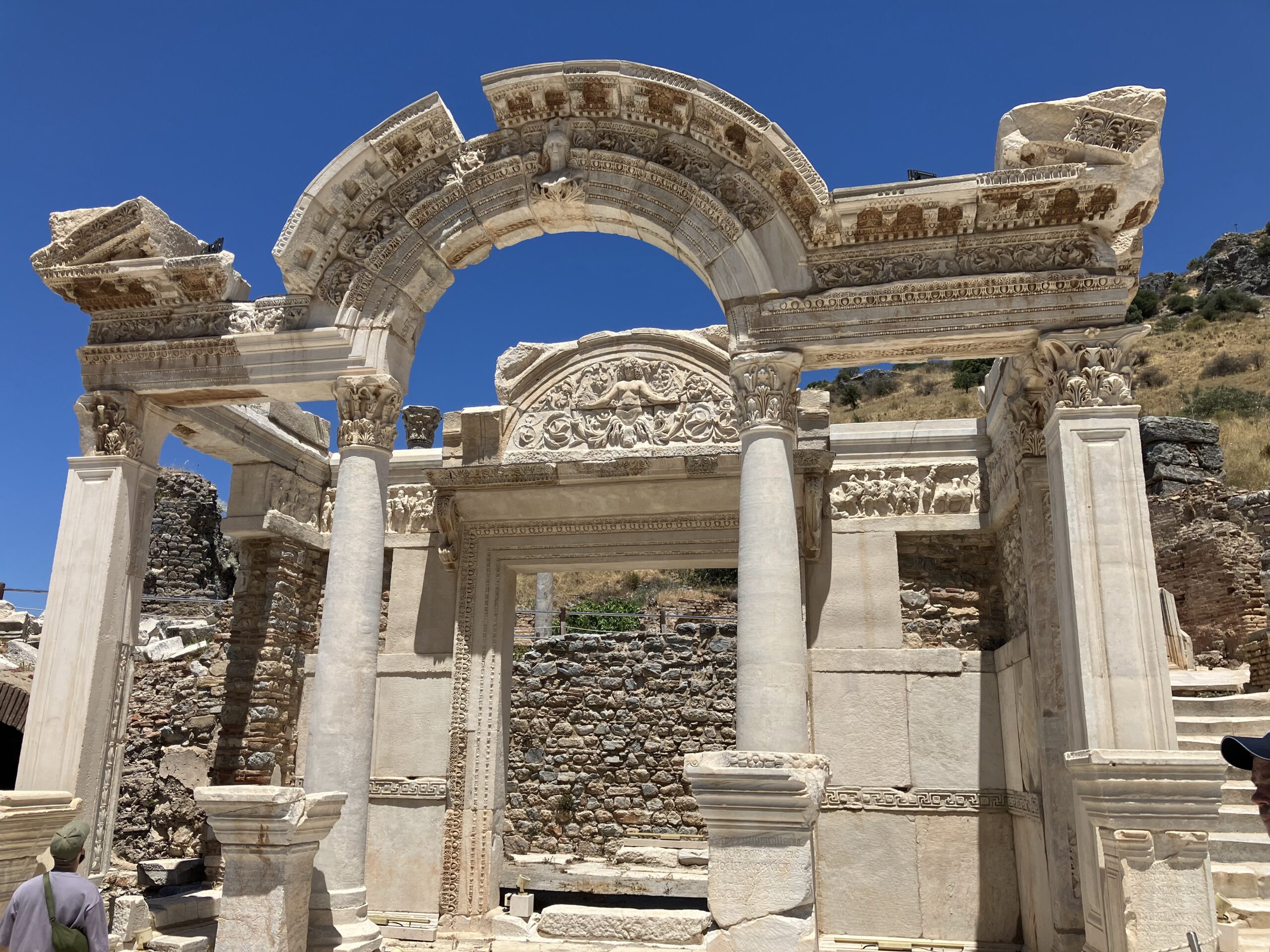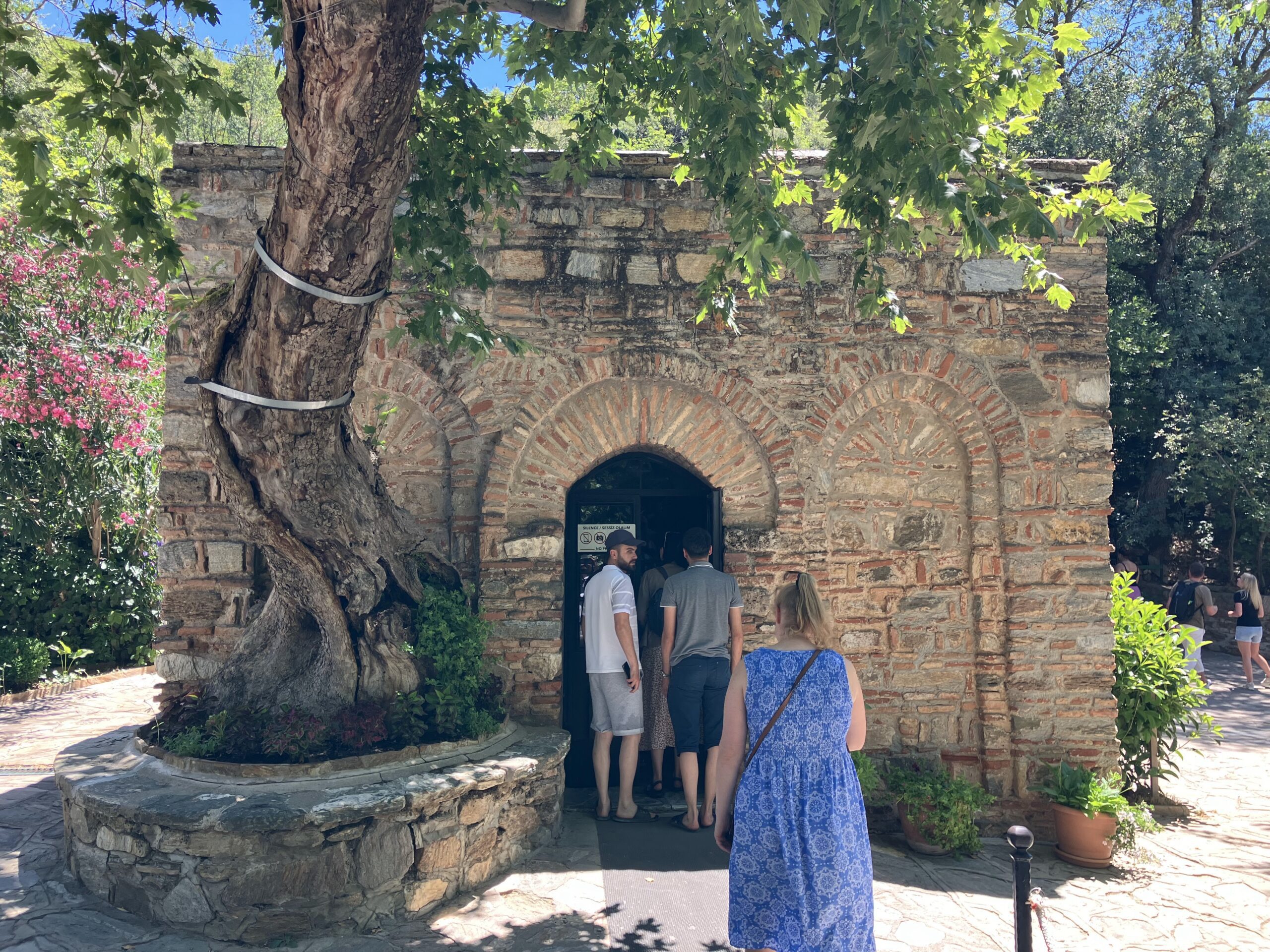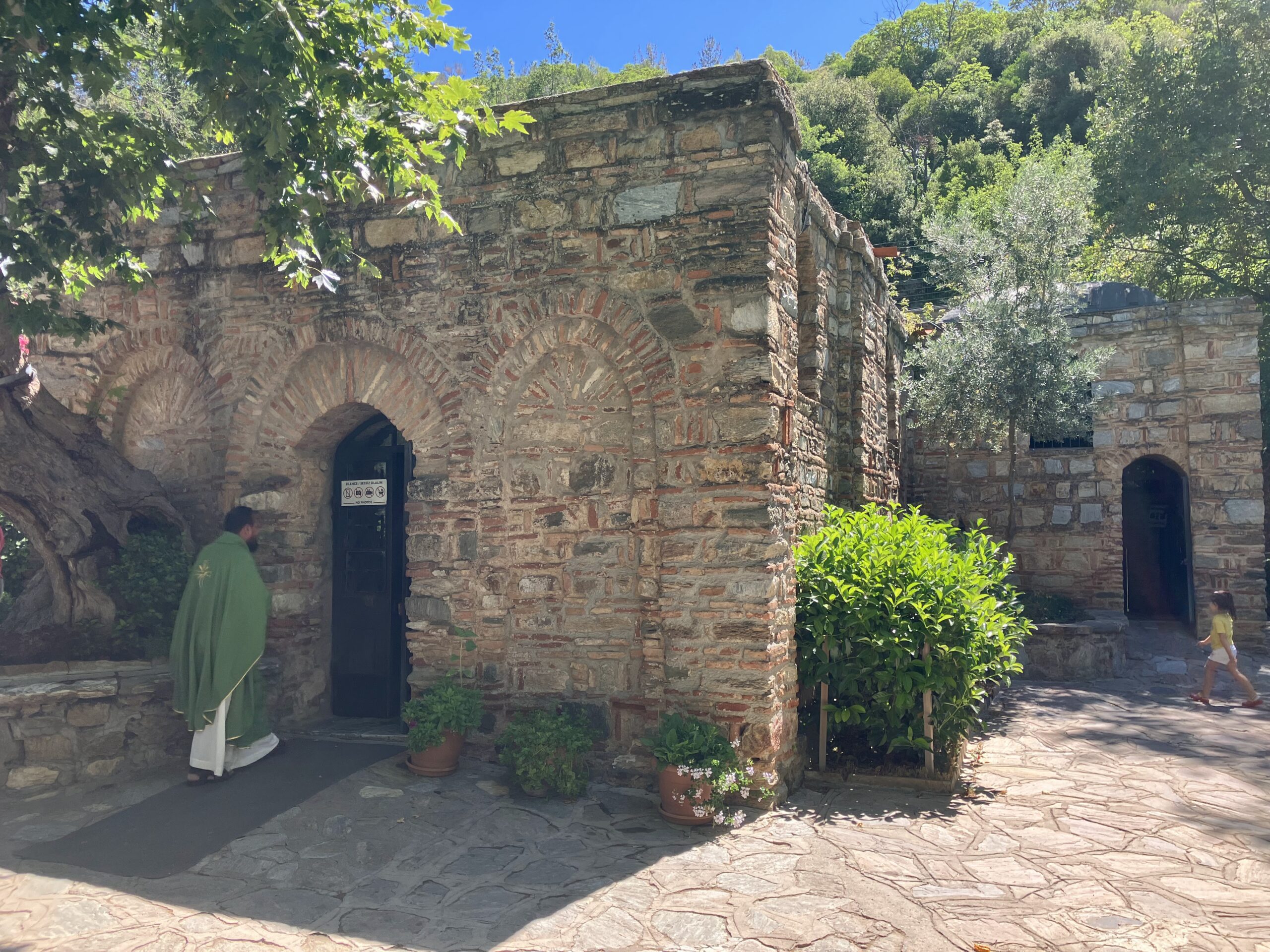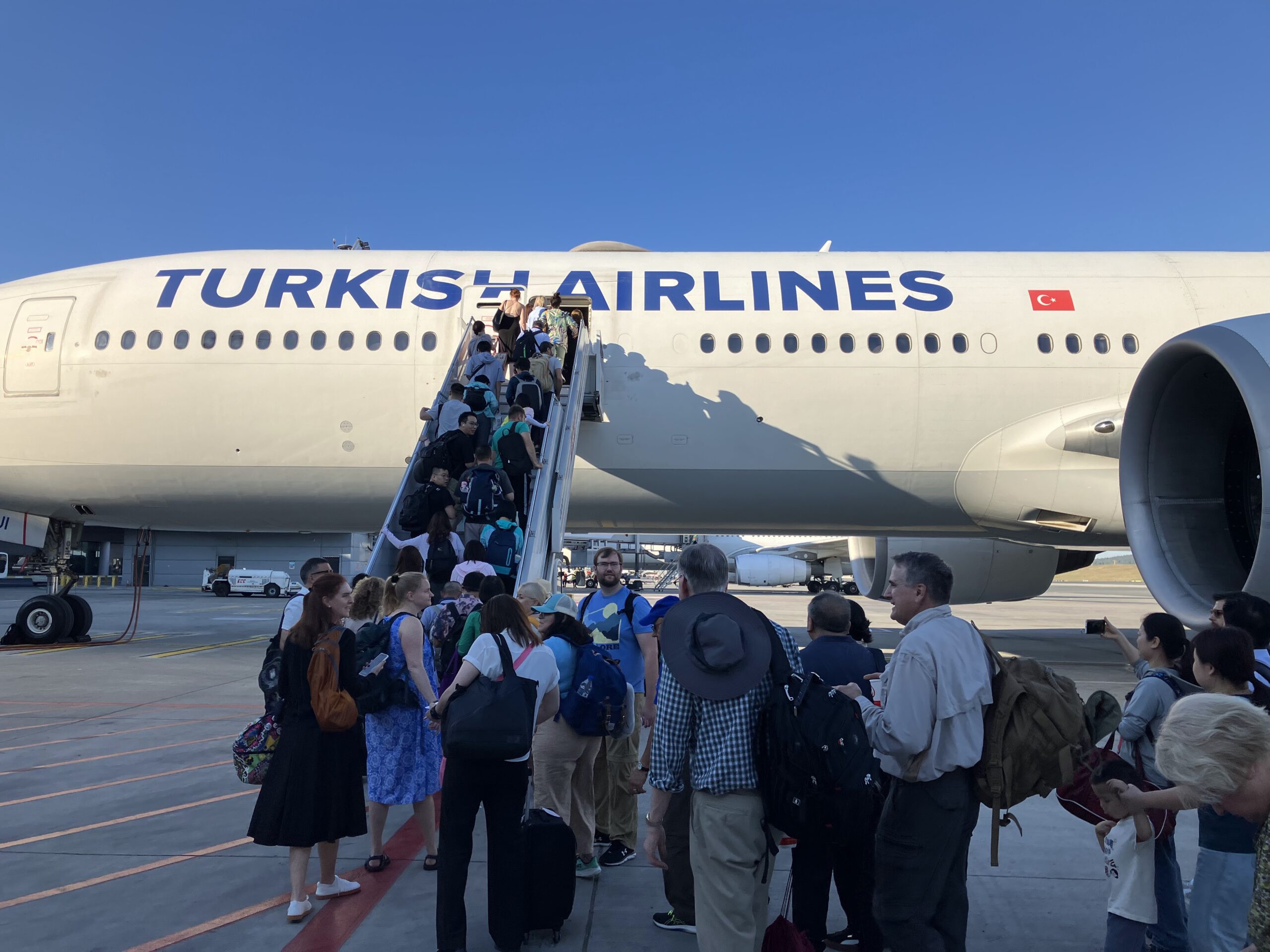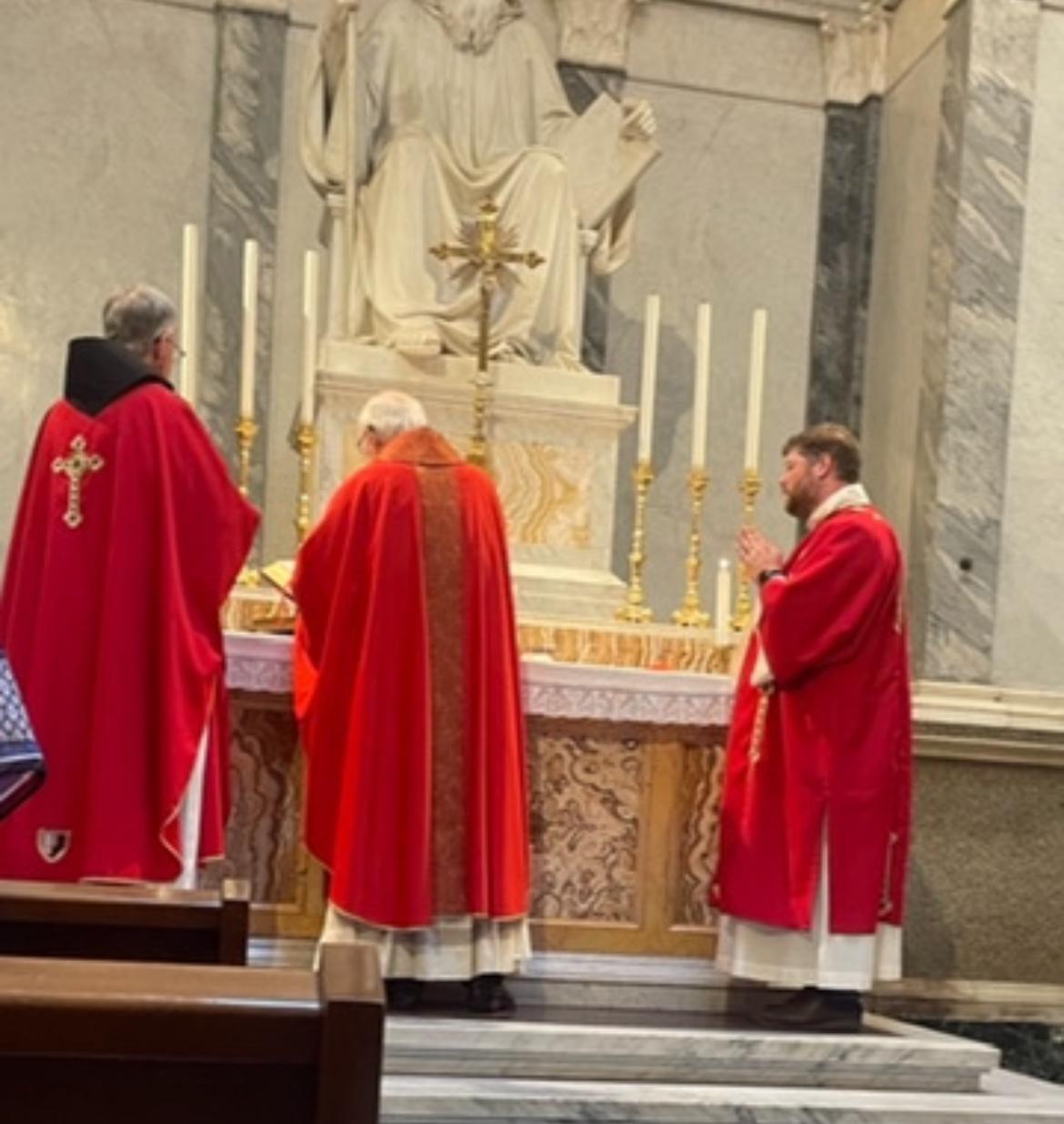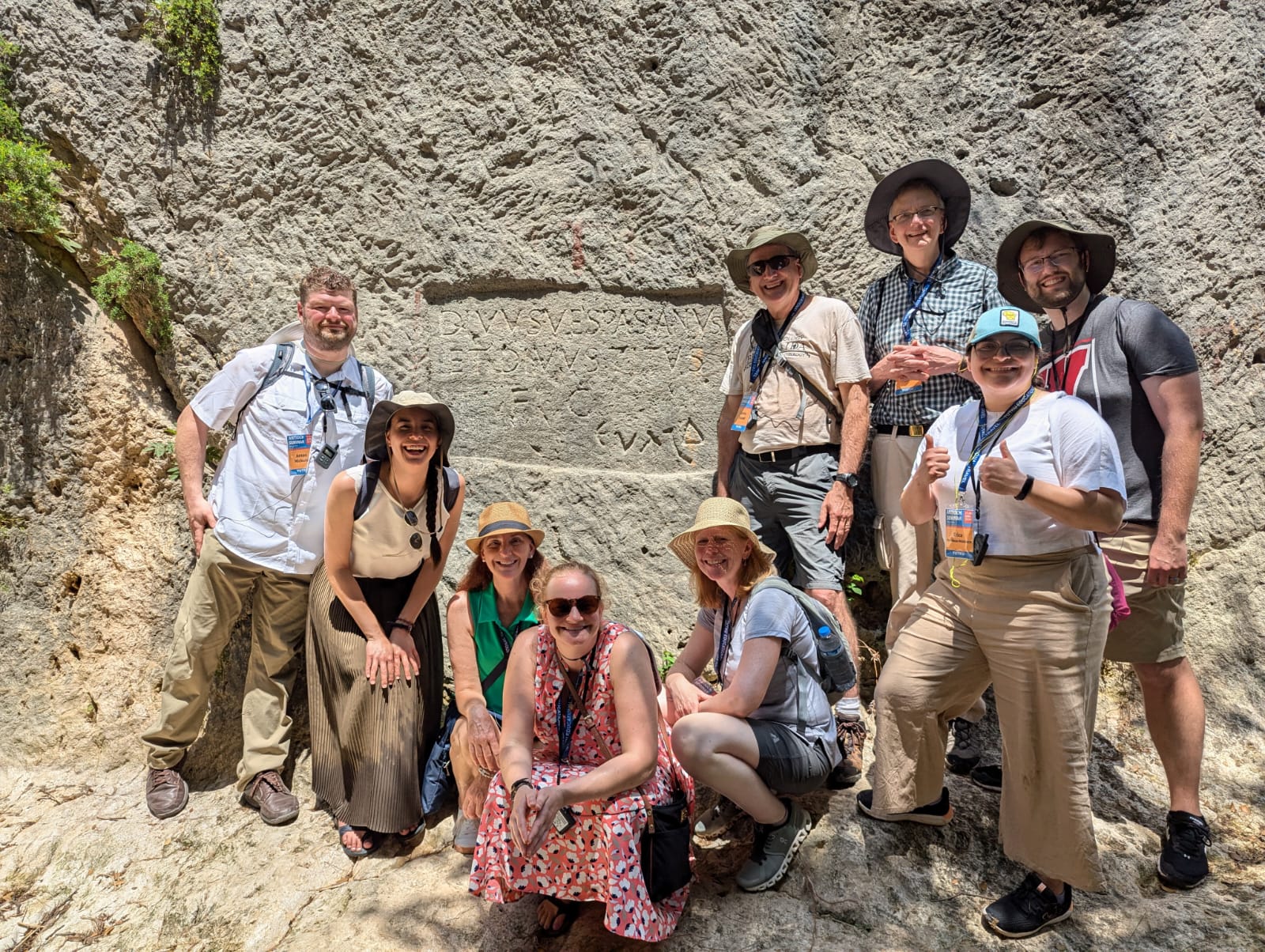Pilgrims Moved, Changed by Following in Footsteps of Ss. Peter and Paul
By Karen Mahoney|Jul 26, 2024|Around the Archdiocese, Local, News
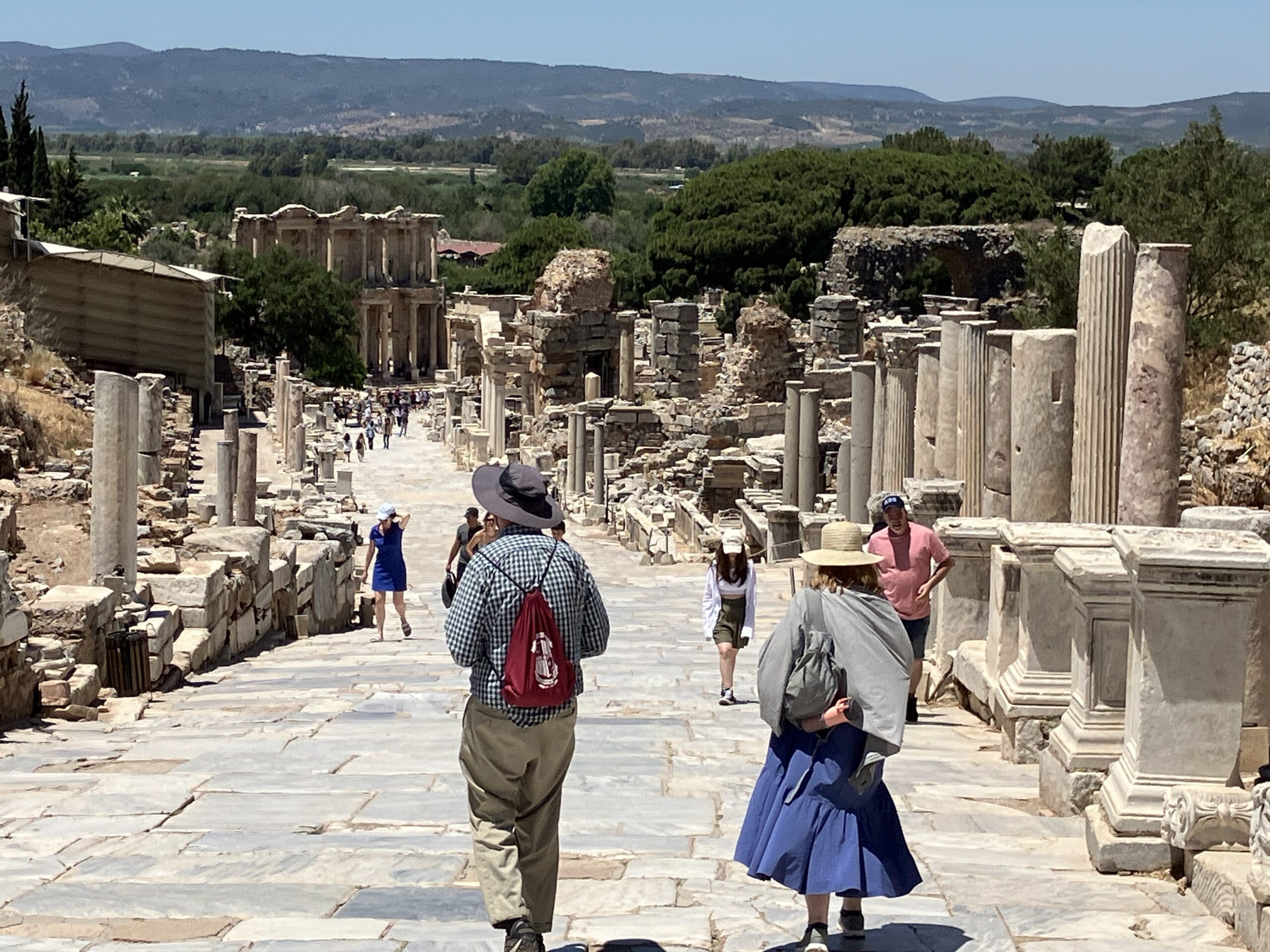
Pilgrims from Sacred Heart Seminary and School of Theology were able to see the Roman streets in Ephesus that were still intact. (Submitted photo)
For 13 pilgrims between the ages of 26-76, a June pilgrimage in the footsteps of Ss. Peter and Paul was a life-changing experience.
For Dcn. Anton Nickolai, a student in Sacred Heart Seminary and School of Theology’s Cor Unum master’s program, it was his first time traveling overseas and brought out a childlike joy in him.
He appreciated getting to know his fellow pilgrims, growing with them as a community united around Christ and the Eucharist warmed his heart.
“Witnessing with my own eyes the awesome missionary work of St. Paul and his companions made the books of the New Testament come alive for me and brought great joy to my heart,” Dcn. Nickolai said. “I came back home with a faith that had been deepened, and a new sense of joy that has stuck with me, and I suspect will continue to stay with me, for years to come.”
The pilgrims, most students or alumni of the Cor Unum program, spent time in Turkey, Cyprus and Rome from June 13-27.
Dr. Patrick Russell (chief academic officer, vice president for intellectual formation and professor of scripture studies at SHSST) revised the school’s annual summer pilgrimage after the Israel-Gaza war began in October, making a pilgrimage to the Holy Land virtually impossible. Fr. Robert Cook, O.F.M., served as the priestly faculty member.
“My goal was to focus on the early Church’s missionary expansion from the Holy Land, using the Acts of the Apostles (and early Church writings like the Letters of St. Ignatius of Antioch) to inform our immersion into the Spirit’s work in spreading the Gospel,” Dr. Russell said. “It was a marvelous experience. The memories of the sites and experiences continue to nourish my spiritual life. Those experiences are taking on more texture as I recall them and increased depth as I have been praying with them. In these ponderings, I feel myself becoming more tangibly, almost viscerally, connected to the early disciples.”
Dr. Russell added that his connection to the early Church grew after the group visited most of the cities and buildings, including the location of the seven ecumenical councils that were essential in delineating the doctrine of the Trinity, the nature of Christ, etc.
“The biggest surprise from the trip for me is how much I keep thinking back to our visit to St. Barnabas’ tomb on the island of Cyprus. I never reflected much on St. Barnabas before this trip as I always thought of him as St. Paul’s sidekick. But in rereading the Acts of the Apostles, I was struck by how St. Barnabas is extolled in Acts 4 as the example par excellence of the early Christians’ practice of sharing all of their wealth with the faith community so that there was no one in need among them,” Dr. Russell said. “He was the one responsible for fetching St. Paul from Tarsus (where St. Paul had retreated after a bit of a rough start to his evangelization ministry) and bringing him to Antioch. This inclusionary action by St. Barnabas was, in a real way, the start of St. Paul’s ministry in spreading the good news of Jesus Christ throughout Turkey and Greece. So, there was a real power in descending into St. Barnabas’ tomb and feeling his presence there, a presence that is a testament to accompaniment and inclusion, which are hallmarks of the New Evangelization, articulated by the last three popes.”
For Cor Unum student Kate Schuering, a member of St. Robert in Shorewood, the trip was unique, extremely hot and grueling, as they had to stay in seven different hotels and take nine different flights to their various destinations.
“It was a whirlwind and a lot of travel,” she said. “We had early morning flights followed by bus trips and touring all day, and when we were in Rome, we had to fly back to Turkey for customs before flying home.”
When the group was in Turkey, they saw ruins and ancient cities such as Ephesus and Perga, but the temperatures were at least 100 degrees during the day. They also visited a number of archaeological museums. In the evenings, they celebrated Mass, had dinner and reflection, played games and talked with family back home.
“We met up with 90 Protestants in the middle of the trip. They were on a biblical trip that included a lot of lectures. We focused more on history, archaeology and the spiritual side with prayer, and scriptural reflections,” said Schuering. “One thing that surprised me was that last year there was a big earthquake in Turkey and I was shocked at how much is still devastated. People are living in storage units. They don’t have the resources to make the improvements.”
Schuering’s favorite part of the pilgrimage was visiting Mary’s town in Ephesus to see where she lived with St. John and the site of her Assumption.
“It was so anointed and so holy. The Blessed Mother is so present there. We were able to have Mass there in the monastery chapel, as there is a religious community that maintains the space,” Schuering said. “I am still unpacking many of the graces I received on this trip. It was incredible to walk with the early apostles and remember that they were real people, these are real places and to walk down the streets they walked down renewed my faith and lit a fire of evangelization in me. I feel the call to go out and make disciples of all nations, live my faith more fully, and call upon the early apostles, Ss. Peter and Paul.”
For Dcn. Nickolai, Parish Director for the Kenosha-Racine County Line Parishes, the opportunity to walk in the steps of the early apostles gave him a deeper appreciation of the missionary work of St. Paul.
“It is one thing to see the routes he took on a map documenting where he went to share the Good News with the world. For me, it was a completely different experience to journey on some of the routes that he took. The sheer distances he covered — the time it must have taken him — the difficulties of traveling by foot and by boat, all these aspects of St. Paul’s journeys were highlighted to me in a very special way,” he said. “At one point in the trip, I found myself exhausted from all our travel, but then I thought about how convenient and comfortable our travel methods are compared to what those early Christian missionaries encountered. To travel that far in that way in those conditions demonstrated so clearly to me the faith and the zeal and the trust in Christ that St. Paul and his companions had — so inspiring.”
One of the most moving aspects of the trip for Dcn. Nickolai was learning about the Holy Stairs in Rome, which Jesus ascended during his Passion to Pilate’s praetorium.
“I had no idea that these steps still existed, let alone that they had been moved to Rome. What was so powerful was ascending the steps on my knees in prayer,” Dcn. Nickolai said. “Pilgrims are allowed to climb the Holy Stairs, now covered by wood to preserve the marble beneath, but must do so on their knees, one stair at a time. I was so moved at the profound and spiritual experience of ascending the very stairs that Jesus did, in solemn prayer and reflection — it is not something I will soon forget.”

